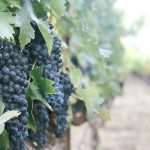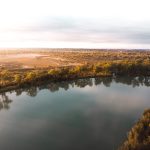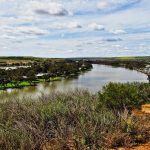By Meg Riley
For Australian grapegrowers, water is always forefront of mind. How much of it? When? For how long? From drought to flooding, growers must constantly brace themselves against the implications of climate change, though mitigating these effects remains a common challenge.
In addition to the underlying concerns around rainfall and temperature, many growers are also squeezed by the extra pressure of water allocations, which dictate how much water a company is entitled to take from a shared resource such as a river or catchment.
Australia’s most contentious and wide-reaching example of such restrictions, the Murray-Darling Basin Plan, has been dredged up into public discussion once again due to revisions made by the federal government.
A quick refresher
The Basin Plan was introduced in 2012 by the Labor government, proposed as a method of managing water levels in the Murray-Darling Basin, with the aim of improving and preserving the basin’s natural ecosystem. The Plan aimed to achieve balance between the reliant communities and what was determined to be the “natural state” of the Basin. The Basin encompasses lakes and waterways across New South Wales, southern Queensland, northern Victoria and eastern South Australia, with 23 rivers including the Darling and the Murray.
The Plan has been a source of division and anguish for many growers and producers since its inception in 2012, creating a rift between those who support the Plan’s move to buy back water entitlements and those who feel they won’t solve the underlying problems. Numerous revisions have been made to the Plan over the years, with the original law leaving the final water recovery target subject to adjustment.
New developments
Information on the Basin Plan is muddled and convoluted no matter which side of the fence you sit on, and something that both supporters and dissenters of the Plan agree on is how the various changes have heightened political tensions between both parties and states.
Disputes over the Plan were reignited recently, when Water Minister Tanya Plibersek announced in August that the government would resume buybacks, and moved the delivery date for the remaining water equivalent from June 2024 to December 2027.
Buybacks in this instance refer to the purchase of water entitlements by the government from willing sellers such as property owners. The water is then returned to the river and no longer available for consumptive use. Buybacks were capped at 1,500GL in 2015 by the Liberal government, with that cap now set to be removed as part of the changes.
Further muddying the waters of exactly how much water was due and when, the Plan allows for “equivalent” water to be delivered, which permits environmental projects considered to be of equivalent impact to the water recovery target to supplement water recovery itself.
With a heightened drought risk on the horizon in light of the recent El Nino declaration, many growers are concerned about the ramifications of the new adjustments to the plan.
Peter Ebner, a prior Licencing manager at Lower Murray Water, says changes to the Basin Plan were “inevitable”.
“The timeframes given the approvals that were needed for the SDL projects [Sustainable Diversion Limit Adjustment Mechanism, i.e. ‘equivalent’ projects] along the Murray were just unrealistic in the beginning,” he explained.” Let alone the impacts Covid and flooding in undertaking the work needed to gain approvals.”
But meeting the targets on time is the least of Ebner’s worries, as underlying issues within the Murray persist, and river habitat and water quality are showing no signs of improving through the current avenues.
As The Guardian reported in November last year, the most significant failing of the Murray Darling Basin Plan to date was that in 2013 it was reliant on historical weather patterns, failing to take into account the decline in water volume as a result of global warming.
Ebner said he was particularly concerned about the transparency of the modelling that the Plan is based on, acknowledging the complexity of interrupting information on the Plan.
“If I look at emerging issues, despite having read as much material as is available – and I’m not sure that I’ve read it all, but I’ve certainly read a lot – I’ve still failed to understand what we’re trying to achieve that drives the target volumes of water that are prescribed in the plan and supposedly needed.”
“For example, are we trying to recreate an environment along the Murray River and the Darling that pre-existed the construction of Dartmouth [referring to the Dartmouth Dam], so what the river would have looked like in the 50s and the 60s? Are we trying to create an environment in the river that will withstand climate change and will the volumes the Commonwealth is seeking support that? Or are we trying to get the river to a point where it will be resilient under various degrees of climate change?”
Undercurrent of concern for river health
Living on a vineyard in an irrigation district in Victoria, Ebner’s only water supply is raw river water from the irrigation system. This leaves him and other growers in similar positions particularly vulnerable, not only to changes to the Plan at the whim of the government, but to the fluctuating condition of the river itself.

Recent conditions in the river have led to outbreaks of blue-green algae, a bacteria which forms on the surface of the water and affects the water quality, at times making the water unsafe to drink or enter, both for humans and the native wildlife.
For communities that rely on river water and have no access to potable urban water, outbreaks of this kind can be devastating.
“I’m quite frankly over it,” said Ebner. “We’re faced every summer now with red alerts for blue-green algae.
“We hold 50,000 litres of water on-farm that lasts us about six weeks, but some of these algae outbreaks are lasting substantially longer than six weeks. So we isolate ourselves from the water distribution system that supplies us and run off that 50,000 litres (or 50 tonne or two semi-trailer loads) of raw river water for that six to eight week period. And once that’s expired, we basically have to cart water in.”
The Victorian floods which occurred between October 2022 and January 2023 sparked even greater problems for growers, causing the population of carp in the river to explode. The excess of carp continue to cause headaches for growers and irrigators along the river, degrading water quality and washing up marooned and rotting in paddocks.
Speaking to the ABC, one farmer referred to the fish plague as “carpageddon”.
As a result of the flooding, an increased amount of sand washed into the Barmah Choke, slowly clogging this narrow section of the Murray River which channels water downstream and into Victoria and South Australia. Whilst there are avenues to alleviate this damage, Ebner fears solutions could take up to a decade to arrive.
The complexity of these issues contribute to concerns that delivery on the Basin Plan will not resolve underlying problems for those who rely on the basin.
What remains
The Basin Plan still has 750GL of water to deliver. Even if the promised SDL projects are completed in the timeframe (whether they will be is a point of contention), the plan will still be 145GL short. These projects were to deliver 605GL of the 750GL shortfall, however as it currently stands the projects likely to proceed may only contribute 200-300GL. Combined with the additional 450GL that is promised to South Australia, this totals between 900GL and 1000GL yet to be delivered, which must now be obtained before December 2027.
The environment minister, Tanya Plibersek, announced a further 49 GL of water buybacks in February, although it is yet to be revealed how much has been successfully purchased.
Ebner believes the 2027 deadline is unrealistic.
“The volumes sought can’t be delivered downstream of the Barmah Choke until constraints between Hume dam and Yarrawonga are resolved, and works to remove sand from the choke are complete,” he explained. “There is no hurry and given the substantial water now held in Environmental Water accounts, isn’t it time to first learn what environmental outcomes can be achieved and sustained with those volumes prior to pursuing further buy backs?”
Lower Murray Water delivers 120GL to its four districts per annum and 450GL to its river pumpers, along with most of South Australia’s irrigators. Ebner explained that the loss of this volume of water would hit growers and their communities hard, affecting not just winegrape growers, but all growers of permanent plantings such as almond and citrus producers.
“That’s equivalent to probably taking all of Lower Murray Water’s irrigators between Nyah and the South Australian Border…out of production.”
Central Irrigation Trust (CIT), a company that delivers water to much of South Australia, delivers 115GL per annum to its districts and a further 350GL on average is extracted by river pumpers. Lower Murray Water delivers 120GL to its four districts per annum and 450GL to its river pumpers.
Together, this totals 1,035GL of use, markedly close to the roughly 1,000GL figure that the Basin Plan, plus the additional 450GL intends to reclaim.
“What the Commonwealth does, is in buying entitlements, they’re buying the air space in Hume, Dartmouth, Blowering, Burrinjuck [dams], Menindee lakes, but they’re not taking the land out of production,” said Ebner.
“So that land that’s still productive is then reliant on the temporary market for water and with trade embargoes between states from one valley to another, it’s getting more and more difficult to trade water from the Goulburn and the [Murrum] Bidgee to the Murray below the choke.
“All I see in the longer term happening [is] less entitlement supporting allocations, reduced water in the temporary market and higher prices for temporary water and reduced allocations due to climate change impacts.” – Peter Ebner
“I can’t find a silver lining in it anywhere, let alone a gold one.”
In years of drought, Ebner explained that Lower Murray Water customers’ irrigation use was, as expected, considerably higher than in years of good rainfall, with total consumption reaching nearly 550GL during the drought in 2019-20. To fulfil a consumption requirement of 550GL, the water had to be sourced either from water allocations or from trade. In the instance of the 2019-20 drought, allocations were only 215GL, roughly 66% of the total 328GL of entitlements held by their irrigators for use/consumption meaning that the 335GL balance had to be obtained by trade.
The possibility of another occurrence like the Millennium Drought, combined with the loss to irrigators of the 1000GL owed for the Plan could spell serious trouble for producers who rely on trading water to maintain their permanent plantings.
Ebner said he would like to see growers offered a better deal to take them out of irrigation completely, which should reduce the pressure on flows through the Barmah choke and minimise demand in areas at risk of delivery shortfalls and potential restrictions in taking water from the river.
“The government has indicated that these communities will be supported by adjustment measures, what do they mean?” – Peter Ebner
“Let them leave with some dignity and equity and a reasonable rate of return. I just don’t think that all the options for restoring the basin have been really thrown out for open and frank discussions with the affected communities, so that they remain resilient and supported.”
This article was originally published in the November 2023 issue of the Australian & New Zealand Grapegrower & Winemaker. To find out more about our monthly magazine, or to subscribe, click here!
Are you a Daily Wine News subscriber? If not, click here to join our mailing list. It’s free!





















